Excerpts from Jim Conrad's
Naturalist Newsletter
Entry dated January 1, 2024, issued from near Tequisquiapan; elevation about 1,900m, (6200 ft), ~N20.57°, ~W99.89°; Querétaro state, MÉXICO
BRICKELLIA TOMENTELLA
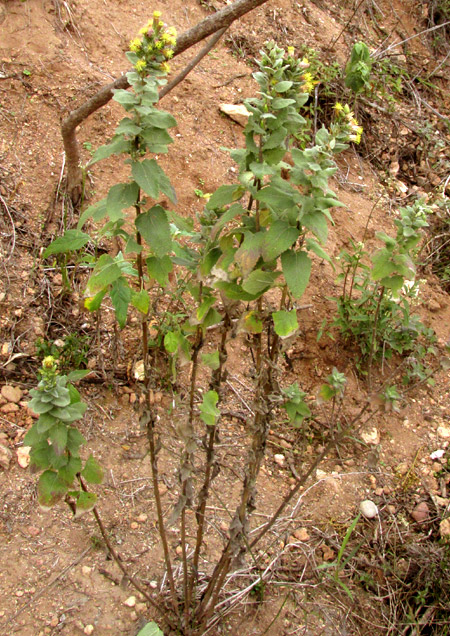

During a continuing two-year drought which the North American Drought Monitor classifies as D3 Extreme, it was surprising to find the above 1.5m tall bush (5ft) flowering so robustly. It grew on the usually shaded floor of a ravine that rarely floods but otherwise is dry -- a barranca. The barranca cut through compacted volcanic ash, or tuff. At the right you can see that the leaves arise singly at stem nodes, and produce slender petioles attaching to somewhat arrowhead-shaped blades whose bases are squarish.
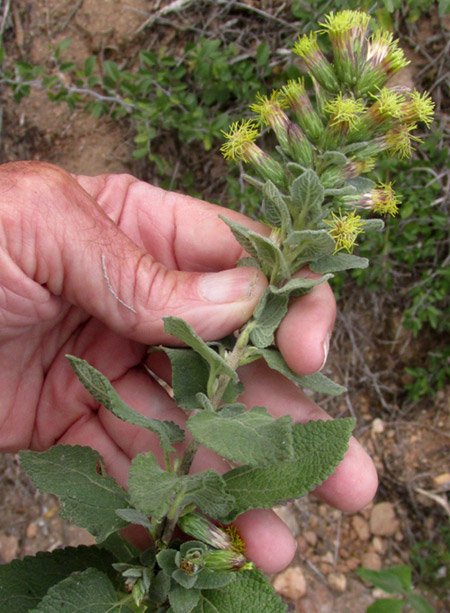
The leaves' surfaces were wrinkled, or rugose, and blade margins were crenulated with low, evenly spaced and sized, rounded teeth.
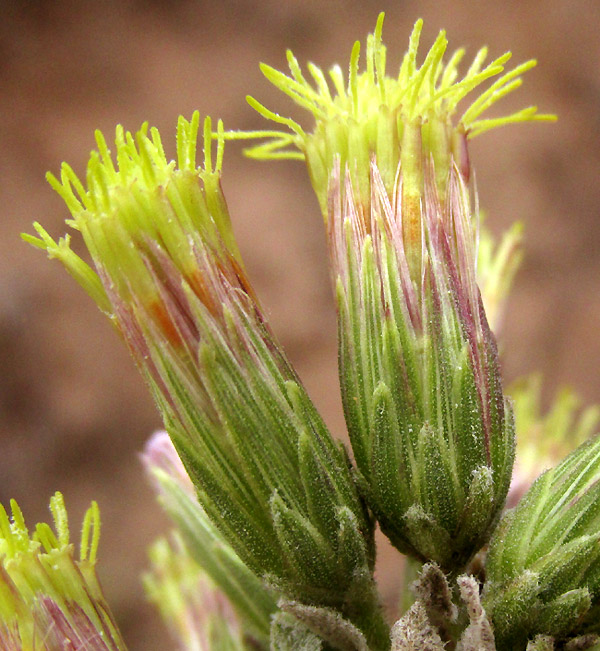
With several disc florets with yellow, cylindrical corollas held within bowl-like involucres consisting of overlapping, scale-like phyllaries, this was a member of the largest of all plant families, the Composite/Aster/Sunflower Family, the Asteraceae. Moreover, our plant was part of that minority of Aster Family species producing no ray florets with flat, petal-like corollas along the flowering heads' margins. The phyllaries exhibited several distinctive features: they were of varying lengths; their margins were white and thin; five distinct green veins ran lengthwise, and; they were thinly covered with white, mealy looking hairs. The lower phyllaries were woolly at their tips, and inner ones were rose-purple.

The above dissected head, or capitulum, shows that atop each ovary a ring of white, slender bristles arises, comprising a pappus. Also, no scale paleae separate the ovaries from another. Both of these observations are critical when identifying Aster Family members from the beginning.
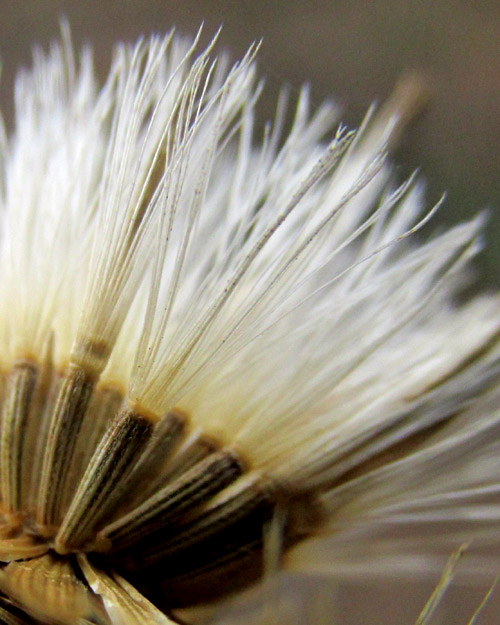
Ovaries of florets in one capitulum already had matured into one-seeded, cypsela-type fruits, atop each of which the florets' pappuses had become parachutes which will help fruit dispersal by wind.
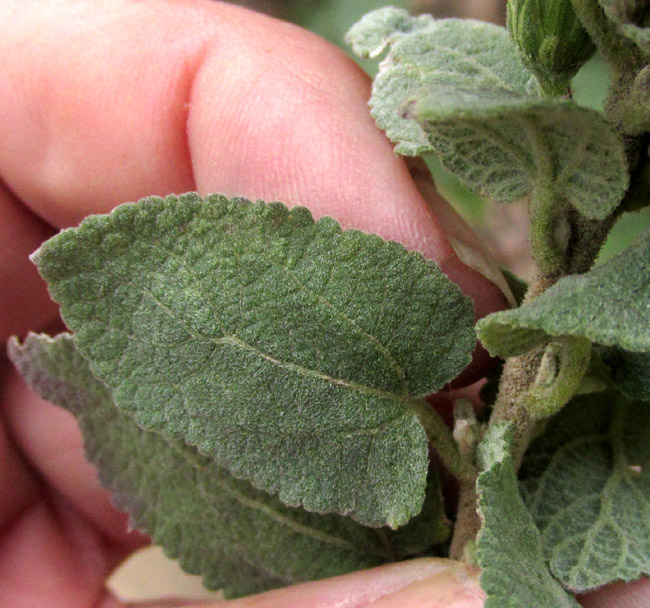
Stems, petioles and both sides of leaf blades were densely covered with short, white hairs, giving the whole plant body a silvery color.

The above shows the kind of short-hairiness appearing on the stem, petioles and buds.
Taking into account just the flowers' appearance, it would be easy to decide that our plant is one we've already seen, only about 500m away and also growing on a near-vertical wall of compacted volcanic tuff: the fairly commonly occurring plant in Mexico called Peistó, Brickellia veronicifolia. However, that species is described as growing only up to 90cm tall (3ft), while our plant was about 1.5m (5ft) tall. Also, leaf blades of Peistó are roundish and only about 1.4cm long (½ inch), while our plant's are somewhat arrowhead-shaped, and up to about 7cm long. Still, the similarity of the flowers is enough to assure that here we have another species of Brickellia.
Currently Kew's Plants of the World Online database recognises 97 Brickellia species. The 2017 study by José Luis Villaseñor entitled "Diversidad y distribución de la familia Asteraceae en México" tells us that Mexico is home to 85 Brickellia species, of which 11 are microendemics, meaning that in the whole world they occur naturally in only one Mexican state. Mexico appears to be the center of diversity for Brickellia. In our general region of upland central Mexico, about nine Brickellia species have been documented.
In our area, if your Brickellia produces 35 or fewer florets in its capitula, the leaves's margins are scalloped with low, rounded teeth and are more or less arrowhead shaped, and the plants are densely short-hair with the hairs not bearing glands, you have BRICKELLIA TOMENTELLA, with no English name.
Brickellia tomentella only grows naturally in highland central Mexico's semiarid altiplano, and in the mountains in scrub, oak and fir forests, from about Guanajuato and Querétaro states in the north, to Oaxaca state in the south. My impression is that it's not a common plant; this is my first encounter with it after two years of wandering the general area.
I find no traditional medicinal or any other kind of use mentioned for Brickellia tomentella, probably because the species is so limited in distribution, is uncommon, and is similar in appearance to other Brickellia species. However, with such robust flowering heads inviting pollinators, and by producing so much biomass on a dry barranca slope where few other species have been able to survive, the species clearly is an active member of the oxygen- and organic-matter-producing, soil-preserving community of mutually beneficial species, thus worthy of recognition.